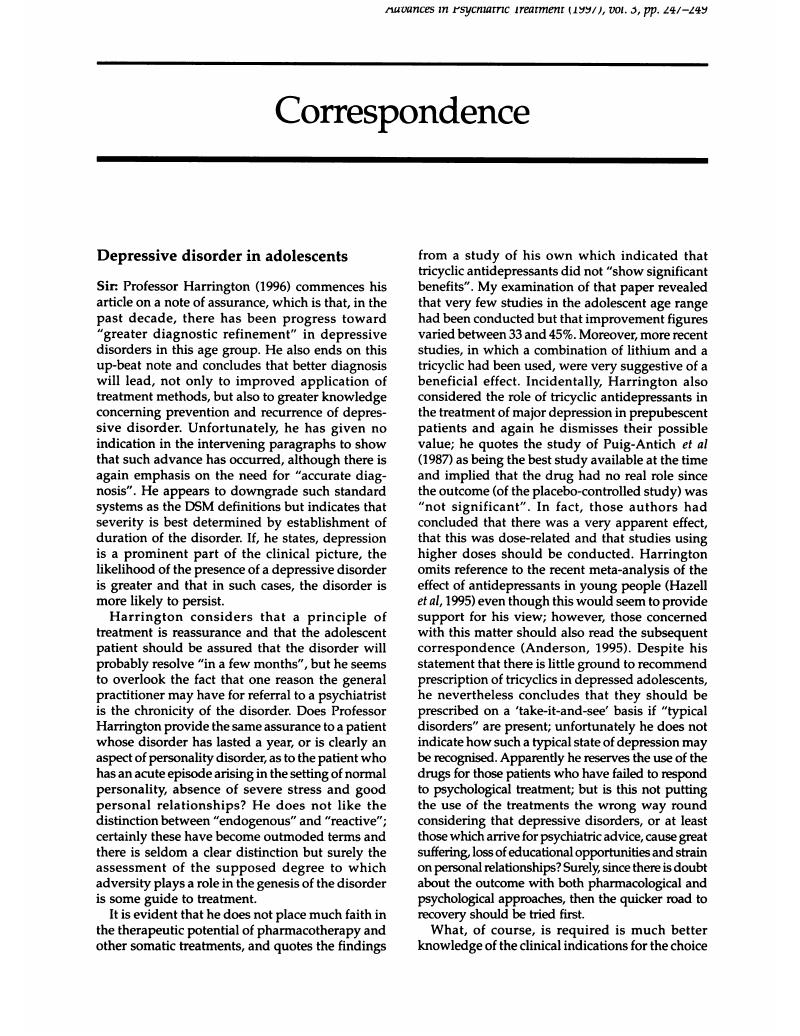No CrossRef data available.
Article contents
Depressive disorder in adolescents
Published online by Cambridge University Press: 02 January 2018
Abstract
An abstract is not available for this content so a preview has been provided. As you have access to this content, a full PDF is available via the ‘Save PDF’ action button.

- Type
- Correspondence
- Information
- Copyright
- Copyright © The Royal College of Psychiatrists 1997
References
Anderson, I. (1995) Place of tricyclics in depression of young people is not proved (letter). British Medical Journal, 311, 390.Google Scholar
Costello, C. G. (1992) Research on symptoms versus research on syndromes. Arguments in favour of allocating more research time to the study of symptoms. British Journal of Psychiatry, 160, 304–308.Google Scholar
Farmer, A. & McGuffin, P. (1989) The classification of the depressions. Contemporary confusion revisited. British Journal of Psychiatry, 155, 437–443.Google Scholar
Harrington, R. (1996) Management of depressive disorder in adolescents. Advances in Psychiatric Treatment, 2, 271–277.Google Scholar
Hazell, P., O'Connell, D., Heathcote, D.
et al (1995) Efficacy of tricyclic drugs in treating child and adolescent depression. British Medical Journal, 310, 897–900.Google Scholar
Meyer, A. (1905) (Discussant in) The classification of melancholia. Journal of Nervous and Mental Disorders, 32, 112–117.Google Scholar
Snaith, R. P. (1995) Depression: a need for new directions in practice and research. Journal of Psychosomatic Research, 19, 943–947.Google Scholar
van Praag, H. M. (1992) Reconquest of the subjective. Against the waning of psychiatric diagnosis. British Journal of Psychiatry, 160, 266–271.Google Scholar



eLetters
No eLetters have been published for this article.